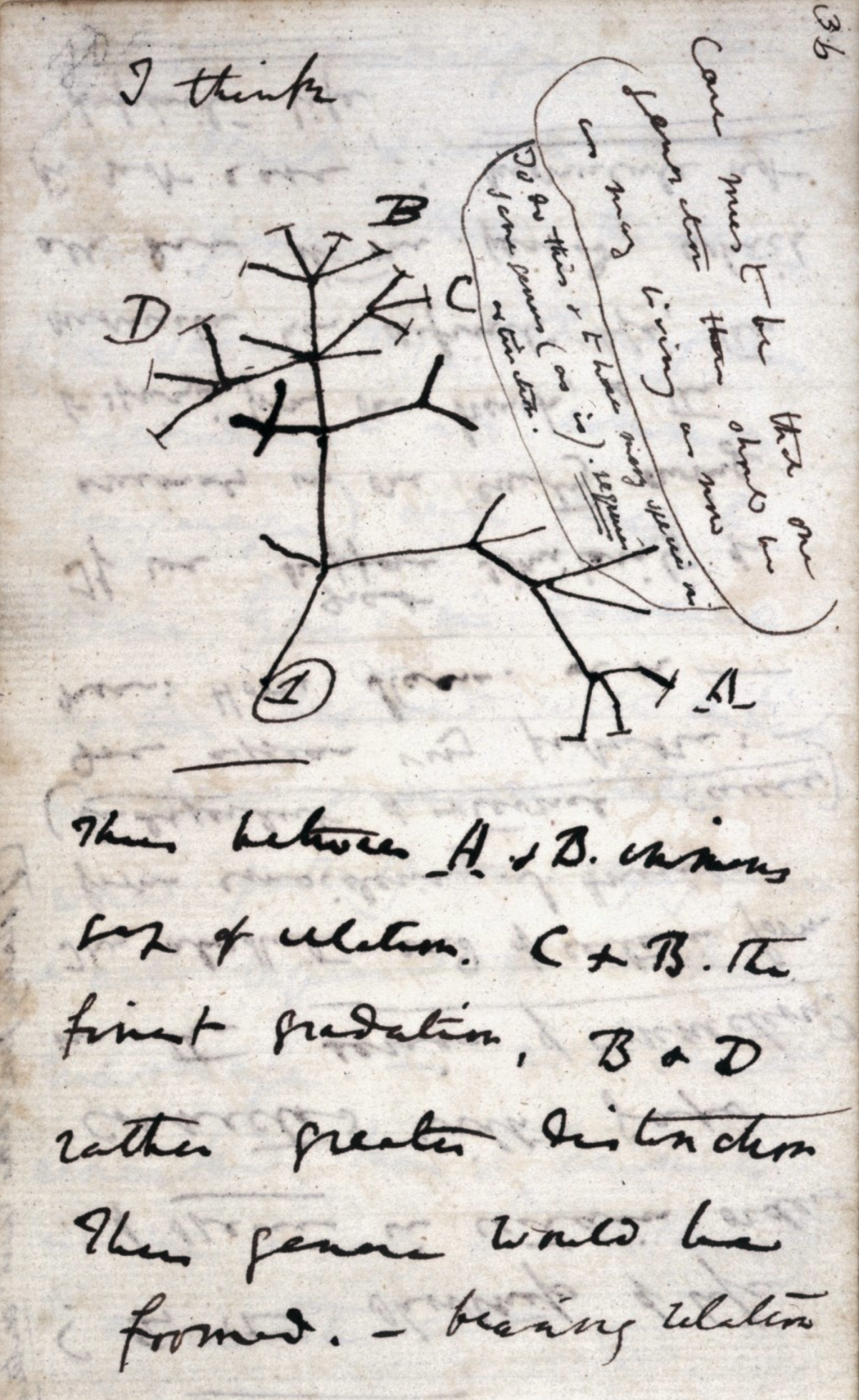PhD project Steven Tyrrell

PhD project Steven TyrrellTree-Thinking in schools and universities – Developing tree-thinking-skills in novices and implementation of teaching-tools
The theory of evolution is the connecting element of modern biology and forms a backbone to properly understand core concepts in biology and apply biological knowledge. Phylogenetic trees are the effigy of this concept: descendance with modification. The ability to correctly interpret those trees and to build them are the bases to develop biological literacy (Dobzhansky, 1973; Gregory, 2008; Baum & Smith, 2013). Pupils and Students in Germany have to adequately interpret and build phylogenetic trees due to the Bildungsstandards.
The abilities to use phylogentic trees are subsumed under the term “tree-thinking”. Usually tree-thinking is divided in tree-reading – all skills required to gather information from phylogenetic trees – and tree-building – all skills required to build a phylogentic tree (O'Hara, 1997; Baum & Smith, 2013; Schramm et al., 2019). Both, tree-reading and tree-building, seem to be a complex set of different sub-skills. There is an empirical tested model for tree-reading-skills (Schramm et al., 2021) but none such model exists for tree-building.
Even though tree-thinking is an important skill in biology, pupils and student have problems reading and building phylogenetic trees (Meisel, 2010; Philipps et al., 2012; Catley et al., 2013). Due to studies from the United States there are indications that even teachers have problems with tree-thinking-skills and harbor pre-concepts (Catley & Novick, 2008; Gregory, 2008). It is reasonable to assume similar indications for Germany. In addition, the representation of a phylogenetic tree seems to have an effect on the performance of students solving tree-thinking-problems and more possible covariate are reasonable to assume, for example spatial intelligence and rotation of the tree (Gregory, 2008; Schramm & Schmiemann, 2019).

Due to those unanswered questions and ambiguities we set different goals which build on each other:
In an experimental setting we will test the tree-reading-skills of students with a paper-and-pencil-test. We will use IRT-analysis to discriminate the effect of the rotation of the tree and the integration of reading-hints in the tree. We will also test the spatial intelligence and the mental effort. We assume that spatial intelligence is a further covariate for tree-thinking-skills and mental effort may have a moderation-effect on tree-thinking.
There is an empirical tested model for tree-reading-skills called STREAM (Schramm et al., 2021), but no model exists for tree-building. We will interview experts and let them solve tree-building-problems while they think aloud and question them about their experiences with tree-building and how they teach these skills. We want to compare and evaluate the protocols derived from the interviews to form a first model for tree-building-skills. This way we will make tree-building accessible for further studies.
Our findings from the first two studies will build the foundation for an intervention-study in school classes. We will try to improve the tree-thinking-skills of pupils and evaluate the effect of spatial intelligence on tree-thinking. Therefor we will build two different settings – one focused on tree-reading-skills and the other on tree-building-skills – and test their effect on the improvement of tree-thinking-skills of students. We want to compare both setting and answer the questions if tree-thinking-skills could be improved specifically in a school-setting and if yes which way is preferable.
In summary this project will deepen our understanding of tree-thinking and which factors have an effect on tree-thinking-skills. We hope our results could form a basis to help students to improve their tree-thinking-skills and to correct pre-concepts. Although we will produce learning-materials which are tested and evaluated and could be used to improve daily teaching in schools and universities. In a final step the interviews will form a starting point for further projects to research and analyze tree-building-skills.
Project-based publication(s)
Tyrrell, S. & Schmiemann, P. (2024). Building trees by juggling information and following rules: an expert interview study on tree-building and phylogenetic inference. Evolution: Education and Outreach, 17, 11. https://doi.org/10.1186/s12052-024-00204-1
References
Baum, D. A., & Smith, S. D. (2013). Tree thinking: An introduction to phylogenetic biology. Roberts and Company.
Catley, K. M., & Novick, L. R. (2008). Seeing the Wood for the Trees: An Analysis of Evolutionary Diagrams in Biology Textbooks. BioScience, 58(10), 976–987. https://doi.org/10.1641/B581011
Catley, K. M., Phillips, B. C., & Novick, L. R. (2013). Snakes and Eels and Dogs! Oh, My! Evaluating High School Students’ Tree-Thinking Skills: An Entry Point to Understanding Evolution. Research in Science Education, 43(6), 2327–2348. https://doi.org/10.1007/s11165-013-9359-9
Dobzhansky, T. (1973). Nothing in Biology Makes Sense except in the Light of Evolution. The American Biology Teacher, 35(3), 125–129. https://doi.org/10.2307/4444260
Gregory, T. R. (2008). Understanding Evolutionary Trees. Evolution, 1(2), 121–137. https://doi.org/10.1007/s12052-008-0035-x
Meisel, R. P. (2010). Teaching Tree-Thinking to Undergraduate Biology Students. Evolution, 3(4), 621–628. https://doi.org/10.1007/s12052-010-0254-9
O'HARA, R. J. (1997). Population thinking and tree thinking in systematics. Zoologica Scripta, 26(4), 323–329. https://doi.org/10.1111/j.1463-6409.1997.tb00422.x
Phillips, B. C., Novick, L. R., Catley, K. M., & Funk, D. J. (2012). Teaching Tree Thinking to College Students: It’s Not as Easy as You Think. Evolution, 5(4), 595–602. https://doi.org/10.1007/s12052-012-0455-5
Schramm, T., Jose, A., & Schmiemann, P. (2021). Modeling and Measuring Tree-Reading Skills in Undergraduate and Graduate Students. CBE Life Sciences Education, 20(3), ar32. https://doi.org/10.1187/cbe.20-06-0131
Schramm, T., Schachtschneider, Y., & Schmiemann, P. (2019). Understanding the tree of life: An overview of tree-reading skill frameworks. Evolution, 12(1), Article 11. https://doi.org/10.1186/s12052-019-0104-3
Schramm, T., & Schmiemann, P. (2019). Teleological pitfalls in reading evolutionary trees and ways to avoid them. Evolution, 12(1), Article 20. https://doi.org/10.1186/s12052-019-0112-3
